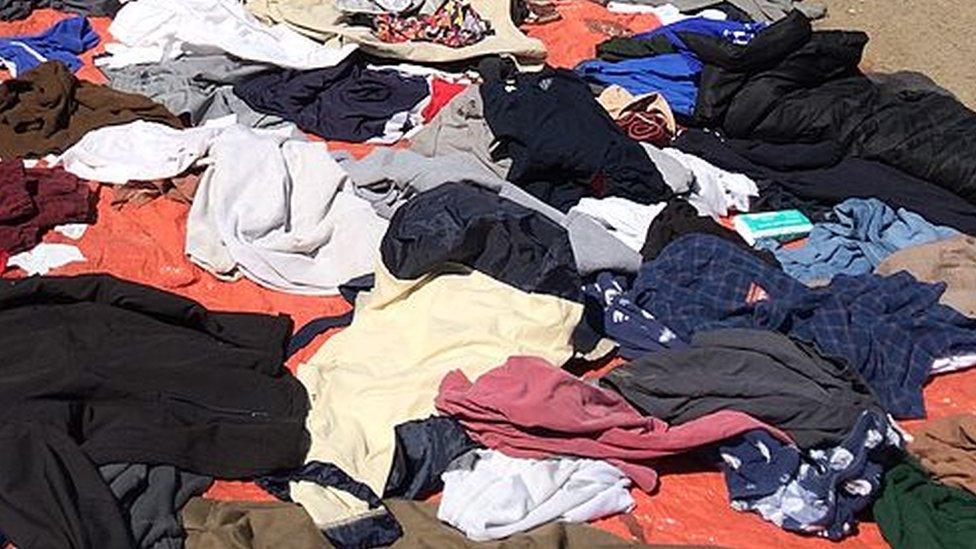Fashion designer creating clothes for 'outer space'

Anurita Chandola began rethinking her fashion career after noticing the environmental impact of the industry
- Published
A fashion designer has created clothing for future space travellers.
Anurita Chandola, who is originally from India, has recently worked on a Martian House Project in Bristol as a designer.
Mrs Chandola was inspired to join the project after observing how her dress blew in the breeze, prompting her to wonder how gravity would affect clothes in space.
She said: “Fashion was the only thing I knew and space had always been a passion so I decided to combine both my passions."

Mrs Chandola wearing what she describes as a personalised space suit that converts into a sleeping bag
She gave a talk at the TedX Bristol event on 18 November at the SS Great Britain, where she discussed her pursuit to design clothes for future space travellers.
Mrs Chandola joined the fashion industry a decade ago, but after noticing the scale of damage fast fashion causes to the planet, began rethinking her career path.
"I had a great life, worked internationally, worked with great brands… and then I realised how much harm just one industry alone could cause to the environment and I decided that I could no longer be a part of it", she said.
She went back to study at the Royal College of Art in London where she began research and crafting a collection of clothes designed for people to wear on Mars.
In 2022, Mrs Chandola worked on a space project at M Shed Square in Bristol.
The project team created a prototype of a real Martian house, which was the first trial of its kind out of the United States.
It comes as Nasa revealed a plan to get humans living on Mars by the 2030s.
In 2015, the space agency conducted a year-long experiment where six scientists lived in a dome with conditions similar to those on Mars. They lived there for 80 days.
The scientists grew plants in the dome, which suddenly died after they received a collection of t-shirts to celebrate their achievements.
Mrs Chandola explained that the plants were killed because of the chemicals used in the dye of the clothing.
She added that events like that can "teach us how to live on earth".
“We should stop taking our things for granted and use our resources wisely", she added.
- Published29 July 2022

- Published7 August 2019

- Published9 October 2023
